Research Article
Volume 2 Issue 4 - 2018
A Rare Record and Occurrence of Sibling Species of Squat Lobster Genus Munida (Crustacea: Decapoda: Family: Munididae) off Pearl Coast of India
1Tilapia Project- Hatchery Technical and Head, Victoria Treasures Limited, Bugabo Bay Garuga on Victoria Lake, Kampala, Uganda, East Africa
2Principal Consultant, Sea Cucumber Consultancy, Queensland, Australia
2Principal Consultant, Sea Cucumber Consultancy, Queensland, Australia
*Corresponding Author: T Vaitheeswaran, Tilapia Project- Hatchery Technical and Head, Victoria Treasures Limited, BUGABO BAY GARUGA on Victoria Lake, Kampala, Uganda, East Africa.
Received: November 15, 2017; Published: February 14, 2018
Abstract
Multi number of specimens of squat lobsters belonging to the families Munididae, Munidopsidae and Eumunididae were collected only seasonal occurrence and specific month of collection, off Pearl coast of India. The present investigation of deep sea crustacean studies revealed that the presences of genus Munida andamanica Alcock, 1894 only one specimen were caught, off pearl city, India. The occurrence of genus Munida andamanica is being reported off pearl city, providing a new arrival of this coast and described taxa. This indication of deep sea squat lobster, is being confirmed that the crustacean biodiversity richness of Gulf of Mannar, it clear view of geographic range distribution. Genus Munida from the southeast and west coast of Indian Ocean is also reported.
Introduction
Deep sea research investigation of deep sea fauna and flora has since revealed a unique quality and highly diverse fauna subject to a different range of multi mileu parameters and variable, to be assessing near future for using deep learning neural network system through satellite. Munida andamanica Alcock, 1894, the occurrence of this specimen only for accidental by-catch specimen, between the region 08° 52’12.1“N 78° 47’ 34.7”E at a depth 300m, away from 37.6 miles, pearl city coast of India, the horizontal distributions of fauna of squat lobster on the continental margin are less well understood than vertical migration of depth related up to 1000m in particular. Our knowledge of the deep sea marine squat lobster and other fauna and its distribution is still in a “discovery stage” at Pearl coast. Deep sea fauna above 310m, to explore the vertical migration and the continental margin, a new species will continue to be discovered. The squat lobsters (Galatheoidea and Chirostloidea) are being used to present investigation study pattern of crustacean biodiversity on continental margins at a global scale. Among squat lobsters families, Eumunididae (Milne-Edwards and Bouvier, 1900), Munididae (Ahyong., et al. 2010) and Munidopsidae (Ortmann, 1898), have been reported more than 150 species, for the genera Eumunida, Munida, and Munidopsis respectively (Macpherson, 2007; Baba., et al. 2008). The present investigations of known species of the genus Munida, off pearl east coast of India is also distribution of first record of pearl coast. M. andamanica the present report showing that the distribution from Arabian Sea, Andaman Sea, Somali Republic, West Sumatra, Indonesia, Philippines, Japan, Australia, Indo West Pacific region and off Pearl east coast of India.
Superfamily: Galatheoidea Samouelle, 1819
Family: Galatheidae Samouelle Ahyong, 2010
Genus: Munida Whiteaves, 1874
Munida andamanica Alcock, 1894
Alcock, 1901: 242
Lloyd, 1905: 2
Kemp & Sewell, 1912: 25
Balss, 1913b: 17
Doflein & Balss, 1913: 143
Yokoya, 1933: 63
Miyake, 1982: 149, pl. 50, figure 1
Baba, 1982a: 103
Baba, 1988: 85
Tirmizi & Javed, 1993: 115, figs 50–53
Baba, 2005: 90, figs 33–35, 258
Family: Galatheidae Samouelle Ahyong, 2010
Genus: Munida Whiteaves, 1874
Munida andamanica Alcock, 1894
Alcock, 1901: 242
Lloyd, 1905: 2
Kemp & Sewell, 1912: 25
Balss, 1913b: 17
Doflein & Balss, 1913: 143
Yokoya, 1933: 63
Miyake, 1982: 149, pl. 50, figure 1
Baba, 1982a: 103
Baba, 1988: 85
Tirmizi & Javed, 1993: 115, figs 50–53
Baba, 2005: 90, figs 33–35, 258
Remarks
The description given by Alcock (1901) agrees with present specimen. The carapace of this specimen is illustrated in (Figure 3) a pair small spines are present in immediately behind the large gastric pair which are in line with the supra-orbital spines. These small spines are present in present specimens and may be quite conspicuous; based upon the geographical ground depends of proper nutrients of environment. The eyes are large and globular but the conspicuous fringe of setae mentioned by Alcock (1901). The chelipeds are less than twice the length of the carapace except in a male specimen. The chelipeds are beset with long plumose setae which may give a feathery look to the appendage, when fresh condition of by-catch specimen (Figure 5). The second, third and fourth legs agree with description given by Alcock, except long chelipeds are present.
The description given by Alcock (1901) agrees with present specimen. The carapace of this specimen is illustrated in (Figure 3) a pair small spines are present in immediately behind the large gastric pair which are in line with the supra-orbital spines. These small spines are present in present specimens and may be quite conspicuous; based upon the geographical ground depends of proper nutrients of environment. The eyes are large and globular but the conspicuous fringe of setae mentioned by Alcock (1901). The chelipeds are less than twice the length of the carapace except in a male specimen. The chelipeds are beset with long plumose setae which may give a feathery look to the appendage, when fresh condition of by-catch specimen (Figure 5). The second, third and fourth legs agree with description given by Alcock, except long chelipeds are present.
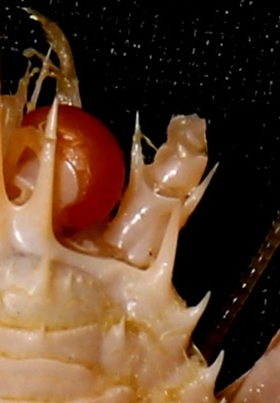
Figure 4: Munida andamanica Alcock, 1894- Anterior part
of cephalothorax, showing antennule, antenna and ventral.
Colour
The carapace, anterior part of the abdomen (segments 1-3), and appendages are reddish pink, while the posterior half of the abdomen including the tail fan is white; P1 fingers are white with reddish tips and P2-4 are white on the proximal half, reddish on the distal half; the base of the rostrum are deep red in colour. While, accidental by-catch fresh specimen is muddy and sand soil with red and catchy in colour. Alcock (1894) quite well agree with specimen are “cephalothorax and appendages pink, abdominal region white”.
The carapace, anterior part of the abdomen (segments 1-3), and appendages are reddish pink, while the posterior half of the abdomen including the tail fan is white; P1 fingers are white with reddish tips and P2-4 are white on the proximal half, reddish on the distal half; the base of the rostrum are deep red in colour. While, accidental by-catch fresh specimen is muddy and sand soil with red and catchy in colour. Alcock (1894) quite well agree with specimen are “cephalothorax and appendages pink, abdominal region white”.
Record
One specimen, measuring 4.1 cm total length and 5 gm in weight (Figure 1, 2, 3, 4, 5, 6) 08° 52’12.1“N 78° 47’ 34.7” E (Figure 7), at a depth of 300m, off Pearl coast of India.
One specimen, measuring 4.1 cm total length and 5 gm in weight (Figure 1, 2, 3, 4, 5, 6) 08° 52’12.1“N 78° 47’ 34.7” E (Figure 7), at a depth of 300m, off Pearl coast of India.
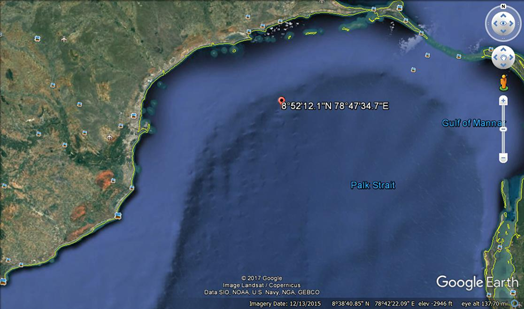
Figure 7: Overview map of the Gulf of Mannar coast, showing
the sampling site of Munida andamanica Alcock, 1894 of Pearl
coast (08° 52’12.1“N 78° 47’ 34.7”E, 300m).
Distribution
Off East coast of Somali Republic, Arabian Sea, Andaman Sea, West coast of Sumatra, Central Queensland, Indonesia, Philippines, Okinawa Trough, Kyushu Palau Ridge, Japan from East coast of Kyushu northward to Bungo Strait, Tosa Bay, off Owase, Suruga Bay, Sagami Bay, and Izu Shoto, Indo-West Pacific including North east coast Qld (Baba, 2005); first record, off Pearl east-coast of India.
Off East coast of Somali Republic, Arabian Sea, Andaman Sea, West coast of Sumatra, Central Queensland, Indonesia, Philippines, Okinawa Trough, Kyushu Palau Ridge, Japan from East coast of Kyushu northward to Bungo Strait, Tosa Bay, off Owase, Suruga Bay, Sagami Bay, and Izu Shoto, Indo-West Pacific including North east coast Qld (Baba, 2005); first record, off Pearl east-coast of India.
Acknowledgements
The author is thankful to Thiru M. Kathirvel, former Principal Scientist of Central Institute of Brackishwater Aquaculture (I.C.A.R.), Chennai, for critical reading of the manuscript and helpful suggestion for its improvement. Dr. K. Baba, Professor, Kumamoto University, Japan, has provided me with literature on squat lobsters taxonomy. I wish to thank Thiru. K. Deenadhayalan, my dear friend and Professional photographer, Trichy, for their photograph of this specimen.
The author is thankful to Thiru M. Kathirvel, former Principal Scientist of Central Institute of Brackishwater Aquaculture (I.C.A.R.), Chennai, for critical reading of the manuscript and helpful suggestion for its improvement. Dr. K. Baba, Professor, Kumamoto University, Japan, has provided me with literature on squat lobsters taxonomy. I wish to thank Thiru. K. Deenadhayalan, my dear friend and Professional photographer, Trichy, for their photograph of this specimen.
References
- Alcock A. “A Descriptive Catalogue of the Indian Deep-Sea Crustacea Decapoda, Macrura and Anomala in the Indian Museum. Being a Revised Account of the Deep-Sea Species Collected by the Royal Indian Marine Survey Ship”. Investigator Calcutta (1901): iv + 286 pp., 3 pls.
- Alcock A. “Natural history notes from H.M. Royal Indian Marine Survey Steamer “Investigator”, commander R.F. Hoskin, R.N., commanding. – Series II, No. 1. On the results of deep-sea dredging during the season of 1890–91 (continued)”. Annals and Magazine of Natural History 13 (1894): 321-334.
- Ahyong ST., et al. “A new classification of the Galatheoidea (Crustacea: Decapoda: Anomura)”. Zootaxa 2676 (2010): 57-68.
- Balss H. “Ostasiatische Dekapoden. I. Die Galatheiden und Paguriden”. Abh. bayer. Akad. Wiss. Math. Phys 9 (1913b): 1-56.
- Baba K. “Deep-sea galatheidean Crustacea (Decapoda, Anomura) taken by the R/V Soyo-Maru in Japanese waters II. Galatheidae”. Bull. Natn. Sci. Mus 8 (1982a): 103-118.
- Baba K. “Chirostylid and Galatheid Crustaceans (Decapoda: Anomura) of the "Albatross" Philippine Expedition 1907-1910”. Res. Crust., Special number 2 (1988): 1-75.
- Baba K. “Deep-sea chirostylid and galatheid crustaceans (Decapoda: Anomura) from the Indo-Pacific, with a list of species”. Galathea Report 20 (2005): 1-317.
- Baba K., et al. “Catalogue of squat lobsters of the world (Crustacea: Decapoda: Anomura- families Chirostylidae, Galathidae and kiwaidae)”. Zootaxa1905 (2008): 1-22.
- Doflein F and Balss H. “Die Galatheiden der Deutschen Tiefsee-Expedition”. Wiss. Ergebn. dt. Tiefsee-Exped. "Valdivia" 20.3 (1913): 125-184.
- Kemp S and Sewell S. “Notes on Decapoda in the Indian Museum”. Records of the Indian Museum 7 (1912): 15-32.
- Lloyd RE. “Contribution to the fauna of the Arabian Sea”. Records of the Indian Museum 1 (1905): 1-12.
- Miyake S. “Japanese Crustacean Decapods and Stomatopods in Color. Vol. 1. Macrura, Anomura and Stomatopoda”. First edition, Hoikusha, Osaka (1982): 261.
- Samouelle G. “The entomologists' useful compendium; or an introduction to the knowledge of British Insects, comprising the best means of obtaining and preserving them, and a description of the apparatus generally used; together with the genera of Linné, and modern methods of arranging the Classes Crustacea, Myriapoda, spiders, mites and insects, from their affinities and structure, according to the views of Dr. Leach. Also an explanation of the terms used in entomology; a calendar of the times of appearance and usual situations of near 3,000 species of British Insects; with instructions for collecting and fitting up objects for the microscope”. Thomas Boys: London (1819): 496.
- Tirmizi NM and Javaid W. “Indian Ocean galatheids (Crustacea: Anomura)”. University Grants Commission, Islamabad, Pakistan(1993): 147.
- Whiteaves JF. “On recent deep-sea dredging operations in the Gulf of St. Lawrence”. American Journal of Science 3.7 (1874): 210-219.
- Yokoya Y. “On the distribution of Decapod Crustacea inhabiting the continental shelf around Japan, chiefly based upon material collected by S.S. Soyo-Maru, during the years 1923-1930”. Journal of the College of Agriculture, Imperial University of Tokyo 12.1 (1933): 226.
Citation:
T Vaitheeswaran and Beni Giraspy. “A Rare Record and Occurrence of Sibling Species of Squat Lobster Genus Munida (Crustacea: Decapoda:
Family: Munididae) off Pearl Coast of India”. Innovative Techniques in Agriculture 2.4 (2018): 428-434.
Copyright: © 2018 T Vaitheeswaran and Beni Giraspy. This is an open-access article distributed under the terms of the Creative Commons Attribution License, which permits unrestricted use, distribution, and reproduction in any medium, provided the original author and source are credited.





























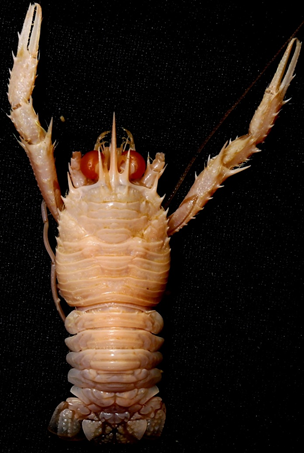
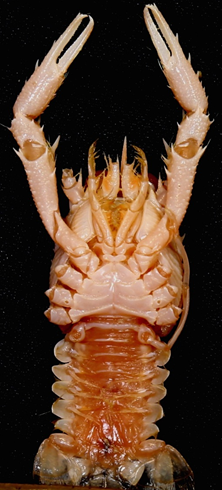
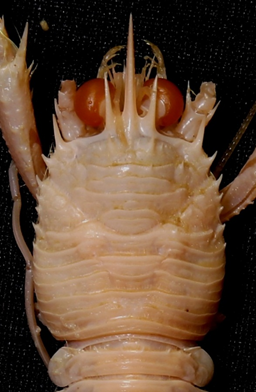
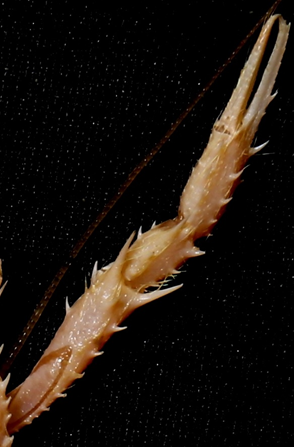
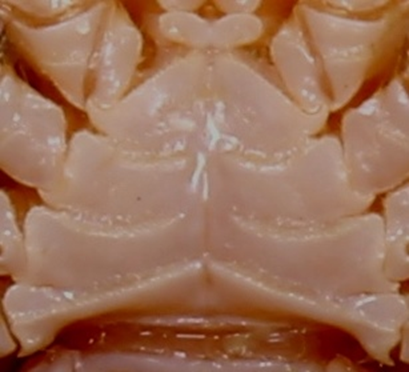
 Scientia Ricerca is licensed and content of this site is available under a Creative Commons Attribution 4.0 International License.
Scientia Ricerca is licensed and content of this site is available under a Creative Commons Attribution 4.0 International License.